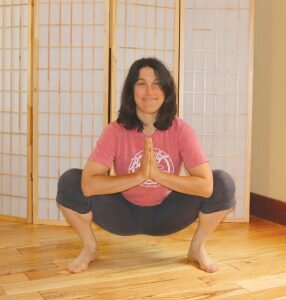Story by Luca Williams
Photos by Brandon Breitenstein
Years ago I traveled to Kenya for a work-study program. The opportunity to live among a “primitive” culture changed my life. I watched women carry babies on their backs while balancing a bucket of water or stack of wood on their heads. The women walked great distances with their heavy loads, laughing, singing or chatting.
If you look at Kenyan women from the Bantu tribes who grew up in the country you will see beautiful regal spines, even under a load. What do the Kenyan people in the country do differently than us in the Western world?
For one, they don’t sit at a desk or in a car for hours every day. I never saw a Kenyan woman from the country do any core exercises, lunges or any other strengthening exercises. On the other hand, they walk everywhere and they squat whenever they cook, eat, or use the choo (bathroom).
Hey, doesn’t this sound like backpacking? Did you notice how much more you walk and squat during a backpacking trip?
Backpacking requires strength, power and endurance to tackle steep climbs and descents while carrying weight. Squatting is the perfect exercise to train for hauling a pack up and down the trail. It strengthens the quadriceps muscle group (front of the thigh), gluteal muscles (butt muscles), hamstrings (back of the thigh), calf muscles and the stabilizers of the spine and the muscles that run along the spine.
Other benefits of squatting
include:
• Increased ankle, knee and hip flexibility.
• Improved balance and coordination.
• Relief from lower back pain.
• Aid in stabilizing the spine.
There are two yoga squatting exercises that you can do anywhere. Utkatasana (chair pose) will strengthen your lower body before your backpack trip. Malasana (Garland) pose is great for stretching before, during and after your trip.

Utkatasana
Stand with your feet approximately shoulder width apart. Anchor your ribcage by contracting your upper abdominal muscles to pull the front of your rib cage downward and inward toward your spine. This anchoring of the rib cage will lengthen and strengthen your lower back.
Bend your knees and drop your hips toward the floor. Keep your heels flat on the floor. If your heels come up you went too far. Make sure that as you are lowering, your chest doesn’t thrust forward. You can keep your arms out in front of you parallel to the floor or above you, just make sure to keep your rib cage anchored. Now, bring your attention to your feet. They can be slightly pronated (turned outward) or facing straight ahead. There must be a full foot connection to the ground. Do not roll to the outer or inner edge of the foot.
Check into your shoulders, face and neck. Are they relaxed or are they holding stress? If you are unable to release the stress then come out of the pose and hold it for less time or try the following easier modification.
Variations A) To make this pose less challenging, place the hands on the knees or on a table in front of you.
Variation B) To make it more challenging, reach your arms and gaze up to the ceiling.

Malasana
Once again, begin by anchoring your rib cage. Squat down with your feet turned outward (pronated). This is how most indigenous people squat. You can put your hands in front of you in prayer position or hold onto a chair or table until your balance and flexibility return. If a squat is too difficult you may want to engage in other stretches to help you open your hips and ankles.
By sitting as much as we do in the Western world we start to lose the suppleness and strength in our legs and the flexibility in our calves, ankles, and outer hips. By walking more and including squatting in our exercise program we can recuperate some of this flexibility and strength for our next backpack trip.
Luca Williams is a certified rolfer in Glacier. She helps snowboarders, skiers, and other outdoor enthusiasts to get aligned and out of pain. Website: lucasrolfing.com blog: movingwithgravity.wordpress.com